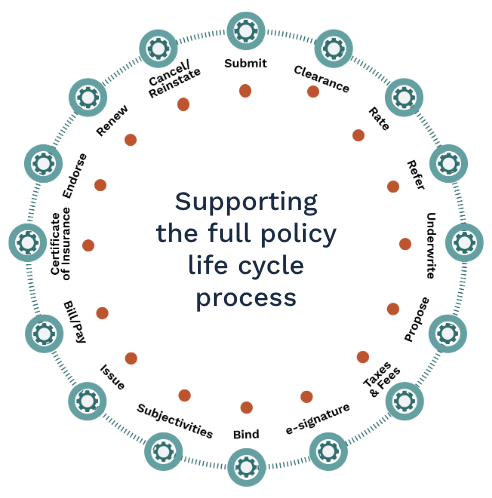One of the insurance CIO’s most important responsibilities is to provide a positive user experience. With direct-to-consumer sales driving insurance distribution, it is especially important to deliver consumer-friendly digital experiences. Empowering underwriters and other internal users or partners is also a priority.
However, it is difficult to keep up with changing user requirements in an environment dominated by monolithic enterprise software systems. Developing individual pieces of functionality is expensive and time-consuming in a monolithic environment, because every little change needs to be reflected across the entire enterprise. Fortunately, there’s a better way: delivering policy lifecycle functionality through microservices.
How Microservices Make Life Easier for the CIO
Using microservices for policy sales and administration enables the CIO to adapt more rapidly to changes in the marketplace or business strategy. With microservices, it’s easy to deliver the individual pieces of functionality that your customers, partners, and internal users need—without the overhead of an enterprise system.
Each microservice is independently scalable and deployable, and can be individually updated or replaced as users’ needs evolve. This makes the entire organization more agile—and frees up IT resources to focus on the most value-adding initiatives.
Microservices also make it easier to work with outside vendors for specific systems or processes. CIOs can look to specialized providers to deliver expertise in specific areas and devote internal staff to optimizing the user interface for direct sales, or developing tools for brokers and other third-parties.
To start this transition, carriers are using microservices in conjunction with their existing enterprise platforms. For example, using a rating microservice (API) in their enterprise platform provides significant value. It allows the CIO to bring up greenfield products lightning fast and at lower cost. And the same rating API and rating content can be used in their consumer portals and channel partner technology platforms. This is exciting stuff, as microservice technology is bridging the gap between current enterprise platform investments and a carrier’s digital strategy.
Start Your Transition to Microservices
For CIOs, the advantages of adopting microservices architecture are huge—especially compared to the old paradigm of having to build or buy (and then maintain) a monolithic enterprise system. For starters, you’ll be eliminating capital expenses such as infrastructure and licensing costs, and replacing them with transactional operating expenses.
The inherent flexibility of microservices also gives the CIO more opportunity to allocate resources and take ownership over revenue-driving aspects of digital branding and user experience. A good example is that with microservices, the user interface layer can be decoupled from the underlying policy lifecycle services, which allows carriers to optimize the user experience for their branding and business workflow requirements. As a result, microservices help improve the overall customer experience throughout all parts of the policy lifecycle: quotes, renewals, claims, payments, etc.
Whatever the future holds for InsurTech, microservices will play an important role in the next phase of development. If you haven’t already, the time to start exploring microservices is now!
Solartis provides a full suite of proven insurance microservices that are available for immediate usage. On top of unprecedented speed and performance, we offer a utilization-based pricing model that ties your costs directly to the value that we deliver.
Contact us to learn more or start a free sandbox trial.




